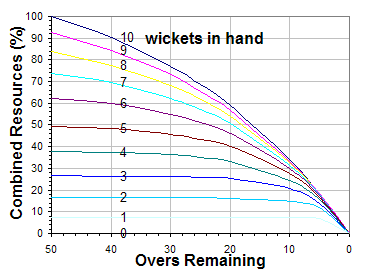

While the concept of the Duckworth-Lewis method sounds like a good one in words but is far from it in practice, especially in the T20 format. The general idea of the DL method is a calculation based on resources available for the task at hand. The resources being the wickets left and the task being the remaining runs from the total to be scored for a win for the chasing team. It requires a minimum of one-fourth of the total overs in an innings to be bowled while a team is chasing a target to declare a result, i.e. 5 overs for a T20 game and 20 overs for a one-day. After the minimum number of overs are bowled, a chart of scores is mapped for every ball and the match result is decided based on that chart. The chasing team needs to be at that score or ahead to win the game or else the bowling team is declared the winner. This chart changes after the fall of every wicket i.e. loss of resource.

ADVERTISEMENT
Article continues below this ad
What the DL method fails to bring into consideration is the quality of the bowling attack and the batting line-up playing the game and the playing conditions which play a huge role in deciding the result of a cricket game. Some pitches slow down considerably or start assisting reverse swing while some others may quicken up. Dew also is a major factor in run chases. It brings down the game of nerves and handling pressure to a simple mathematical equation.

ADVERTISEMENT
ADVERTISEMENT
ADVERTISEMENT
ADVERTISEMENT

